

various dates
Center: part of the pediment of the Porta RomanaThe inscription is reconstructed as: SENATVS POPVLVSQVE ROMANVS/COLONIAE OSTIENSIVM MVROS ET PORTAS DEDIT/M. TVLLIVS CICERO CO(n)S(ul) FECIT CVRAVITQUE (or LOCAVITQUE, or a similar verb)/P. CLODIVS PVLCHER TR(ibunus) PL(ebis) CONSVMMAVIT ET PROBAVIT/ PORTAM VETVSTATE CORRVPTAM [---] The editors of this website explain the inscription :"In other words: the Senate of Rome gave walls and gates to the colony of the Ostians; Cicero, when he was consul (63 BC), oversaw the construction; Clodius, arch-enemy of Cicero, finished the work when he was tribune of the people (58 BC). Line 5 cannot be reconstructed completely. It mentions the rebuilding in the first century AD." | ||
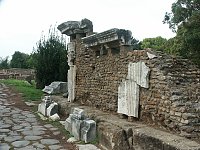
|
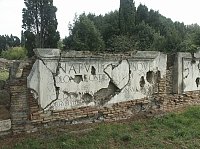
|
Entrance into the cityLeaving the Necropolis outside the city walls, one enters the city. Here Via Ostiense changes to Decumanus Maximus. |
Left: Piazzale della VittoriaThose coming in to the city might have rested at this square. There are remains of a large pool or fountain in the square. A statue of the winged Victory (or Minerva) dating from the end of the first century CE may have once been part of the town gate--with a matching one for the other side. (See photo below, left at far left.) | ||
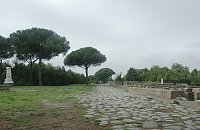
|
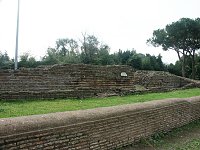
|
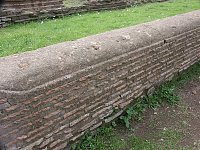
|
Winged Victory (Minerva) | ||
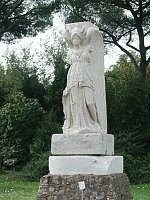
|
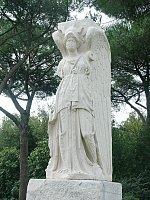
|
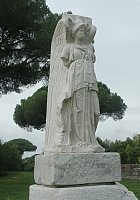
|
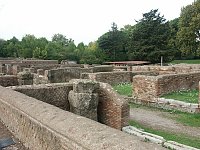
|
Remains of a warehouse from the Republican periodMasonry in the foreground is "Opus reticulatum" or small tufa blocks laid diagonally. |
|
 Click here to return to index of art historical sites.
Click here to return to index of art historical sites.
 Click here to return to index of artists and architects.
Click here to return to index of artists and architects.
 Click here to return to chronological index.
Click here to return to chronological index.
 Click here to see the home page of Bluffton University.
Click here to see the home page of Bluffton University.

